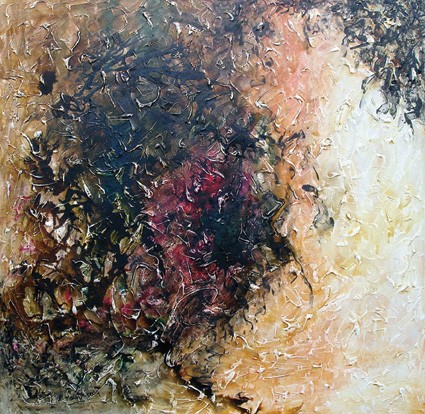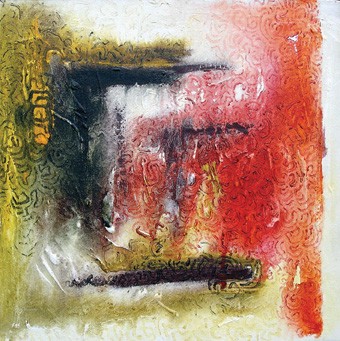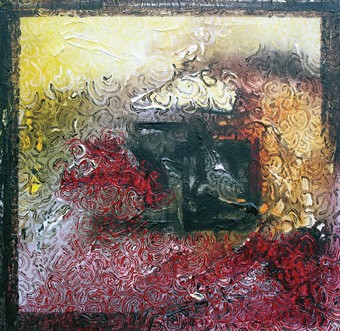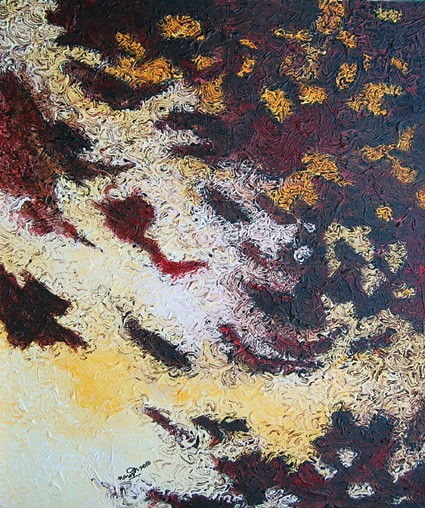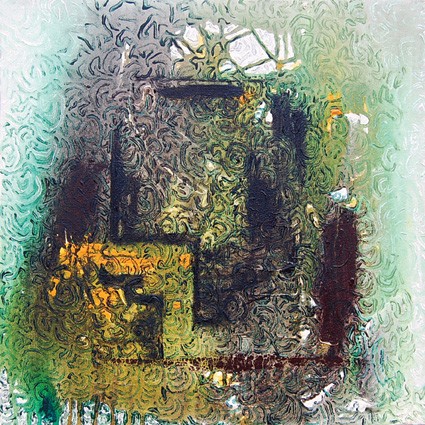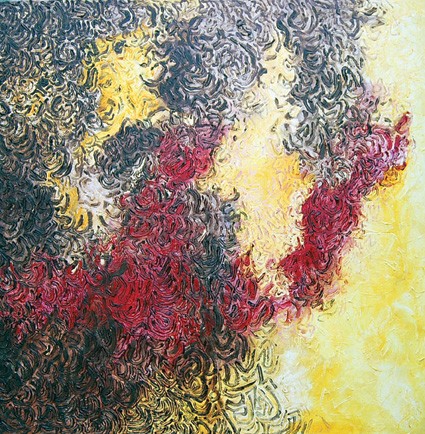Nabindra Man Rajbhandari

Nabindra Man Rajbhandari’s paintings present the pleasant shapes and exquisite combination of colours and lines. He gives visible shape to the invisible and intangible aspects of human imagination and experience. In other words, he concretizes the abstract feelings. The colours and the shapes do not stand for the external objects, events and people. Thus, the viewers need not bother about referring things and activities of the past and future. They have presentational immediacy, that is, the colours and shapes appeal our senses directly. They provide visual comfort and the peace of mind. The more one views his paintings, the more things one finds in his works.
Nabindra Man Rajbhandari’s paintings present the pleasant shapes and exquisite combination of colours and lines. He gives visible shape to the invisible and intangible aspects of human imagination and experience. In other words, he concretizes the abstract feelings. The colours and the shapes do not stand for the external objects, events and people. Thus, the viewers need not bother about referring things and activities of the past and future. They have presentational immediacy, that is, the colours and shapes appeal our senses directly. They provide visual comfort and the peace of mind. The more one views his paintings, the more things one finds in his works.
Despite the fact that Nabindra’s works do not present the recognizable things, there are innumerable abstract images that appeal to our heart and imagination. Using thick colours, the artist creates complex nexus of tiny curves. The shapes, lines and colours arouse our tactile sensation. This complex network may imply the complexity of life and world. The creation of multiple tiny curves in coherent manner depicts the artist’s adroitness, dexterity and patience.
As we follow the movement of the curves, we reach to the new setting and the environment. Again the curves move toward other horizons. In every viewing, the painting remains ever new. However, sometimes, the abstract images may resemble to the images of nature provisionally. No sooner we find similarity, their shape changes into another image. Thus, the works are plural and open-ended. As a result their significance is contingent and ever-shifting.
Some of his works present floating solid cubes. Perhaps do not mean anything but unknowingly we feel nearer to them. We love to view consistently. They provide comfort and soothing effect to the tortured and troubled mind.
Born in 18 November 1960, Kathmandu, Nepal
Academic background
1981: Bachelors of Fine Arts, Lalit Kala Campus, Tribhuvan University
Awards
2002: First Prize, National Art Exhibition, Nepal Association of Fine Arts (NAFA), Kathmandu
2001: Third Prize, National Art Exhibition, NAFA, Kathmandu
1985: Second Prize on Poster Design Competition, Nepal Family Planning Association, Kathmandu
1983: Rastriya Siksha Puraskaar, Ministry of Education
1980: Consolation Prize, National Art Exhibition, NAFA, Kathmandu
Member
1992-1996 Vice President, Young Artists’ Group (YAG)
1986-1991: Treasurer, Artists’ Society of Nepal
1984-1992: Executive Member, Young Artists’ Group
At Present:
– Member, Board of Directors, Sirjana College of Fine Arts, Kathmandu
– Programme Coordinator, Sirjana College of Fine Arts, Kathmandu
– Coordinator, Sirjana Contemporary Art Gallery, Kathmandu
– Executive Member, Prashanta Smriti Samaj, Kathmandu
Special performance
2008: Design Coordinator of the balot papers and other print materials of the Constituent Assembly Election, 2008
2006: Designer of the new Coat of Arms of the Government of Nepal
Publications
2002: Co-author of Creative Activities through Art and Craft, a Primary Level Textbook, Sajha Prakashan
1999: Co-author of ‘Sirjanaatmak Kriyakalaap Kasari?’, A Teachers’ Resource Material, Primary Curriculum and Textbook Development Unit, BPEP, Ministry of Education
1995: Co-author of ‘Sadharan Rekha Chitra’, A Teachers’ Resource Material, Primary Curriculum and Textbook Development Unit, BPEP, Ministry of Education
1991-1993 Editor of ‘Madhyam’, a Magazine on Visual Art, Young Artists’ Group (YAG)
Articles on visual art published in Madhuparka, Kantipur Daily, Sharada, Canvas and other publications.
Traveled to
Thailand, Indonesia, Japan, France and England
